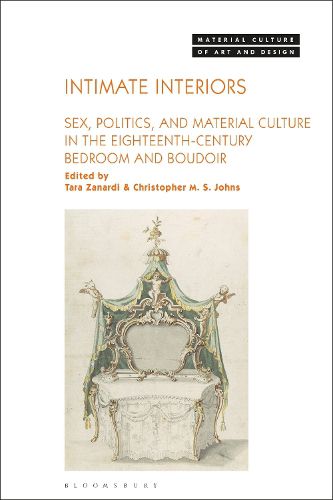Readings Newsletter
Become a Readings Member to make your shopping experience even easier.
Sign in or sign up for free!
You’re not far away from qualifying for FREE standard shipping within Australia
You’ve qualified for FREE standard shipping within Australia
The cart is loading…






A desire for intimacy in domestic spaces - motivated by a growing sense of individualistic expression, an incentive to conceal the labor or enslavement taking place, and an appetite for solace and comfort - led to interiors taking on more specific roles in the eighteenth century. By examining the architectural, visual, and material culture of eighteenth-century spaces, Intimate Interiors foregrounds the interrelated concepts of intimacy, privacy, informality, and sociability in order to show how these ideas played an increasingly integral role in the period's architectural and material design.
Across eleven innovative chapters that explore issues of gender, politics, travel, exoticism, imperialism, sensorial experiences, identity, interiority, and modernity, this volume demonstrates how intimacy was a fundamental goal in the planning of private quarters. In doing so, the political nature of private spaces is uncovered, whilst highlighting the contradictions and complexities of these highly performative "private" interiors. Employing distinct methodological perspectives across various geographical sites, from Turkey to Versailles, Britain to Benin, Intimate Interiors draws as-yet untraced connections between Enlightenment Europe, imperial outposts, and major metropolitan centers across the globe.
$9.00 standard shipping within Australia
FREE standard shipping within Australia for orders over $100.00
Express & International shipping calculated at checkout
A desire for intimacy in domestic spaces - motivated by a growing sense of individualistic expression, an incentive to conceal the labor or enslavement taking place, and an appetite for solace and comfort - led to interiors taking on more specific roles in the eighteenth century. By examining the architectural, visual, and material culture of eighteenth-century spaces, Intimate Interiors foregrounds the interrelated concepts of intimacy, privacy, informality, and sociability in order to show how these ideas played an increasingly integral role in the period's architectural and material design.
Across eleven innovative chapters that explore issues of gender, politics, travel, exoticism, imperialism, sensorial experiences, identity, interiority, and modernity, this volume demonstrates how intimacy was a fundamental goal in the planning of private quarters. In doing so, the political nature of private spaces is uncovered, whilst highlighting the contradictions and complexities of these highly performative "private" interiors. Employing distinct methodological perspectives across various geographical sites, from Turkey to Versailles, Britain to Benin, Intimate Interiors draws as-yet untraced connections between Enlightenment Europe, imperial outposts, and major metropolitan centers across the globe.